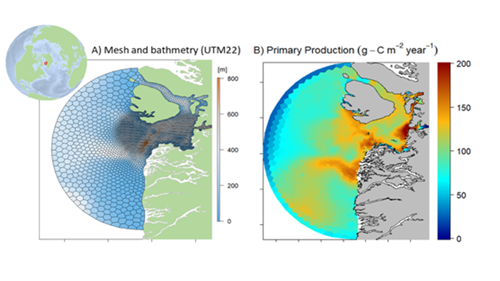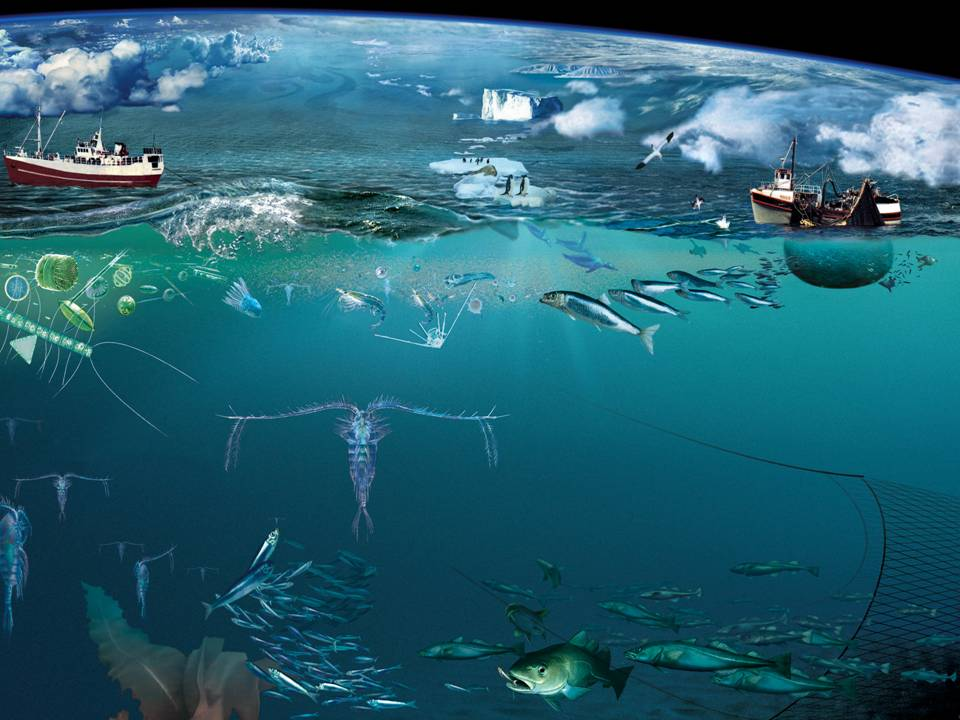The main restriction to developing good Arctic biological observation systems is the ice cover.
Challenges:
The main challenge is to improve understanding of how the ecosystem responds to changes in the Arctic physical environment. Most of the biological sampling, especially sub-surface, is still done from research vessels and the long distance from ports to the high Arctic adds to the costs and feasibility. Even baseline information regarding physical, chemical and biological conditions is generally lacking in the Arctic Ocean. Similar to physical observations, the main restriction to developing good Arctic biological observation systems is the ice cover. Consequently, there are large knowledge gaps concerning the presence, abundance and distribution of planktonic organisms, fish species, marine mammals and benthic organisms in the Arctic. Furthermore, very little is known about the production capacity at species level, hence also in an ecosystem context.
Results obtained in INTAROS:
The studies have focused on Barents Sea and Disko Bay, Western Greenland.
A main focus for the Barents Sea case was to evaluate the appropriateness and significance of the indicators used in the Norwegian inter-sectorial Barents Sea Integrated Environmental Management Plan (BSMP). Two different end-to-end ecosystem models, NORWECOM.E2E and NoBa Atlantis, were used. Time series of a set of the proposed indicators have been estimated using the methodology suggested in BSMP under a projection of future climate. Indicators based purely on observations are often limited by the existing monitoring programs, and sampling schemes will largely affect the quality of the indicators. Through an Observing System Simulation Experiment (OSSE) the effect of the sampling scheme was investigated, and the design of a minimum cost monitoring program suggested. To reduce the high number of indicators suggested, the models have also been used to search for an optimal indicator subset. The results will be further exploited to enhance the input to the BSMP in a cost-benefit setting.
The aim of the Disko Bay case was to demonstrate downscaling from large-scale regional models to fine-scale local models of Arctic coastal waters. The biogeochemical model ERGOM was applied, as was FlexSem (a versatile framework for 3D hydrodynamic, biogeochemical, individual based and sediment transport modelling). The models representation of freshwater input was enhanced by including state-of-the-art data on meltwater run-off from PROMICE. The model developed is used to evaluate impacts of climate and environmental change on local marine resources to support management decisions. Data assimilation of several satellite/in situ data products on Arctic Ocean biogeochemistry is being implemented using state-of-art algorithmic approaches. The downscaling approach applied provides intelligent extrapolation of ocean parameters as well as a platform to conduct OSSE design studies to optimize future observational deployment. The experience from the INTAROS Disko Bay study will be further exploited to evaluate how data from observing systems may contribute to advances in ecological modelling and understanding of Arctic ecosystems more generally and allow for expanding of developed management tools into new geographic areas, e.g. in other Greenlandic coastal areas.

Figure 1: The FlexSem model framework set up for Disko Bay in Western Greenland. A) Location, computational mesh and bathymetry. B) Primary production modelled for April-September 2008.
By combining physical oceanographic observations and trawl samples new knowledge on the spatiotemporal variation in demersal fish along the West Greenland coast and shelf was gained in INTAROS. Based on summer trawls surveys, spatiotemporal variation in the demersal fish community was quantified between 1993 and 2016. A substantial change was observed with 4 to 10-fold increase in total biomass and an increase in both the average size of specimens and in the average trophic level in net hauls. Findings suggest a substantial quantitative and qualitative change in the importance of demersal fish for the coastal food web with likely cascading effect to trophic levels below and above. Based on near-bottom temperature measured on the trawl gear we identified slight warming trends in the northern region and in the two deepest depth strata (200-600 m). When compared to decadal variability based on CTD data from available data bases we find that the recent warming trend is not outside the range of a previous “warm period” in the 1930s, underlining the importance of identifying decadal variability in climate. Decreasing fish mortality from shrimp by-catch contributed to improved mitigation practice combined with decreased fishing effort is identified as a major driving factor. However, it coincides with atmospheric warming and consequent reduction in sea ice concentration and increased summer run-off from the Greenland Ice Sheet, which improves light and nutrient conditions for primary production. This is an important example of how recovery from over-exploitation may be shaped by, in this case favourable, climate change. The results may be exploited towards enhanced scientific advice to fisheries managers.
11-10-2021
